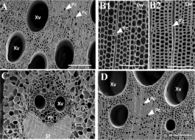Odie
Panning for Montana gold, with Betsy, the mule!
I remember seeing this commercial when it first came out. There was skepticism on whether it makes good sense.....but, those of us who transitioned from single edge shaves to two bladed shaves realize there is something to it.....and the resulting closer shaves we get are undeniable.
View: https://youtu.be/l7kT5kclz_k
---------------------------------------------------------------------------------
OK, now what does this have to do with lathe turning?
No, I'm not suggesting two-bladed turning tools......but, what I am suggesting is this:
As the wood is being cut, the pressure from the cutting action creates a pulling action on the wood fibers, and this effects the wood fibers below the surface. Just how much it effects the wood below the surface is up for speculation. Lathe rpm and the level of sharpness are major contributors to this theory, but I speculate the amount of disruption of the wood fibers beneath the surface is directly related to the best rpm with the least amount of inherent vibration, AND how sharp the cutting edge is.
My speculation is this: .....IF the wood fibers directly beneath the surface are disrupted, then the ability of that surface to be sanded well, AND how well the finish will appear on that surface, is directly effected. The wood fibers are naturally bonded, and when that bond is broken, then they are now loosely held together.....instead of their naturally tight state. This condition is not noticeable by sight.....or by feel.
Comments?......
(Well, except for those who think I'm a complete nutcase!....but, I must say that I'm definitely not joking about this theory. )
)
-----odie-----
.
---------------------------------------------------------------------------------
OK, now what does this have to do with lathe turning?
No, I'm not suggesting two-bladed turning tools......but, what I am suggesting is this:
As the wood is being cut, the pressure from the cutting action creates a pulling action on the wood fibers, and this effects the wood fibers below the surface. Just how much it effects the wood below the surface is up for speculation. Lathe rpm and the level of sharpness are major contributors to this theory, but I speculate the amount of disruption of the wood fibers beneath the surface is directly related to the best rpm with the least amount of inherent vibration, AND how sharp the cutting edge is.
My speculation is this: .....IF the wood fibers directly beneath the surface are disrupted, then the ability of that surface to be sanded well, AND how well the finish will appear on that surface, is directly effected. The wood fibers are naturally bonded, and when that bond is broken, then they are now loosely held together.....instead of their naturally tight state. This condition is not noticeable by sight.....or by feel.
Comments?......
(Well, except for those who think I'm a complete nutcase!....but, I must say that I'm definitely not joking about this theory.
-----odie-----
.
Last edited:

